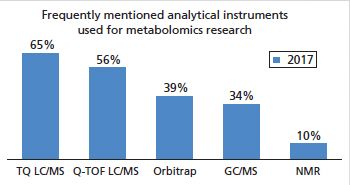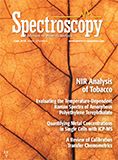Market Profile: Metabolomics
Metabolomics is one of the newer “omics” fields, and focuses on the characterization of the small molecule metabolites in biological systems. Metabolomics research has the potential to shed light on certain disease states, monitor patient response to treatment, and contribute to drug target discovery. Applications also span pharmaceutical development and neuroscience research.
Metabolomics is one of the newer “omics” fields, and focuses on the characterization of the small molecule metabolites in biological systems. Metabolomics research has the potential to shed light on certain disease states, monitor patient response to treatment, and contribute to drug target discovery. Applications also span pharmaceutical development and neuroscience research.
The market for metabolomics analysis has seen significant growth in the past decade, but other “omics” areas such as proteomics and genomics still receive much more attention. The huge chemical diversity of metabolites and their transient nature make their identification and study difficult. Like proteomics, metabolomics is beginning to find a home in clinical applications. It will take time for diagnostic methods to become established, but this represents an example of how metabolomics is continuing to break into new fields.
In line with the growing popularity of the field, development of analytical systems capable of carrying out in-depth discoveries of the metabolome is on the rise. The market for the analytical systems and related products used for metabolomics is predicted to grow to $1.1 million in 2022. As well as significant market growth, funding for metabolomics research has also increased, with National Institutes of Health (NIH) grant funding rising from $100 million in 2007 to $900 million in 2017.
The most popular instruments for metabolomics analysis are triple quadrupole liquid chromatography– mass spectrometry (LC–MS) systems, which comprise about two-thirds of the market, according to a recent survey of metabolomics researchers conducted by Top-Down Analytics (TDA). Other frequently mentioned technologies were Q-TOFs, Orbitraps, and GC–MS instruments. Approximately 10% of the respondents had direct access to an NMR in their laboratory.

Market size and growth estimates were adopted from TDA’s market research report, Metabolomics 2018: Charged with Massive Potential. For more information, contact Glenn Cudiamat, general manager, at (888) 953-5655 or glenn.cudiamat@tdaresearch.com. Glenn is a market research expert who specializes in scientific technologies used in lab and process industries.

Market Profile: Mass, Molecular, and Atomic Spectroscopy
December 1st 2018Mass spectrometry, molecular and atomic spectroscopy technologies combine to represent more than a fifth of the overall market for laboratory analytical instrumentation. These techniques are perhaps the most broadly used instruments, with utility in pharmaceuticals and other life sciences, chemicals, environmental, food, clinical/Dx and other applications.